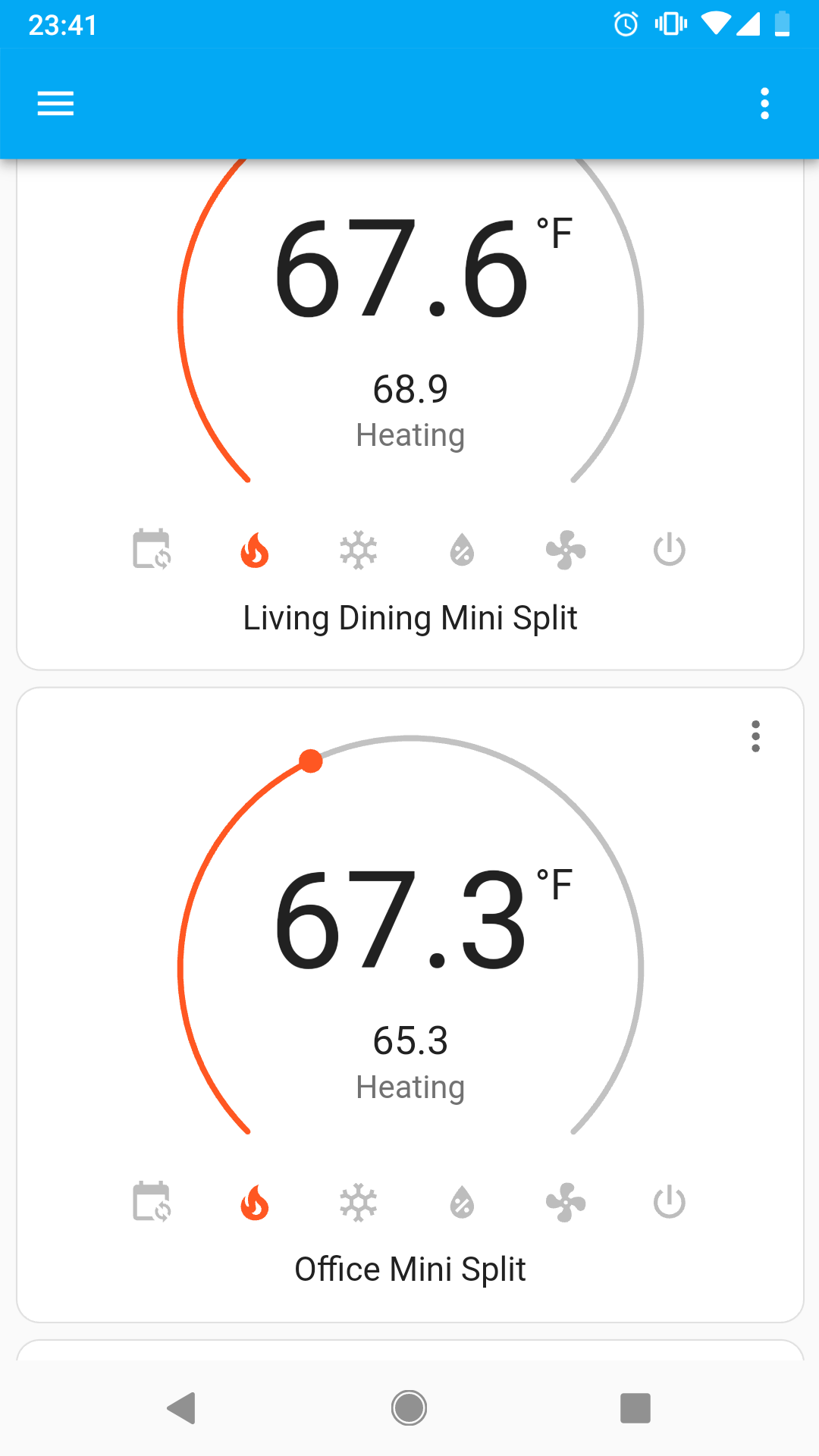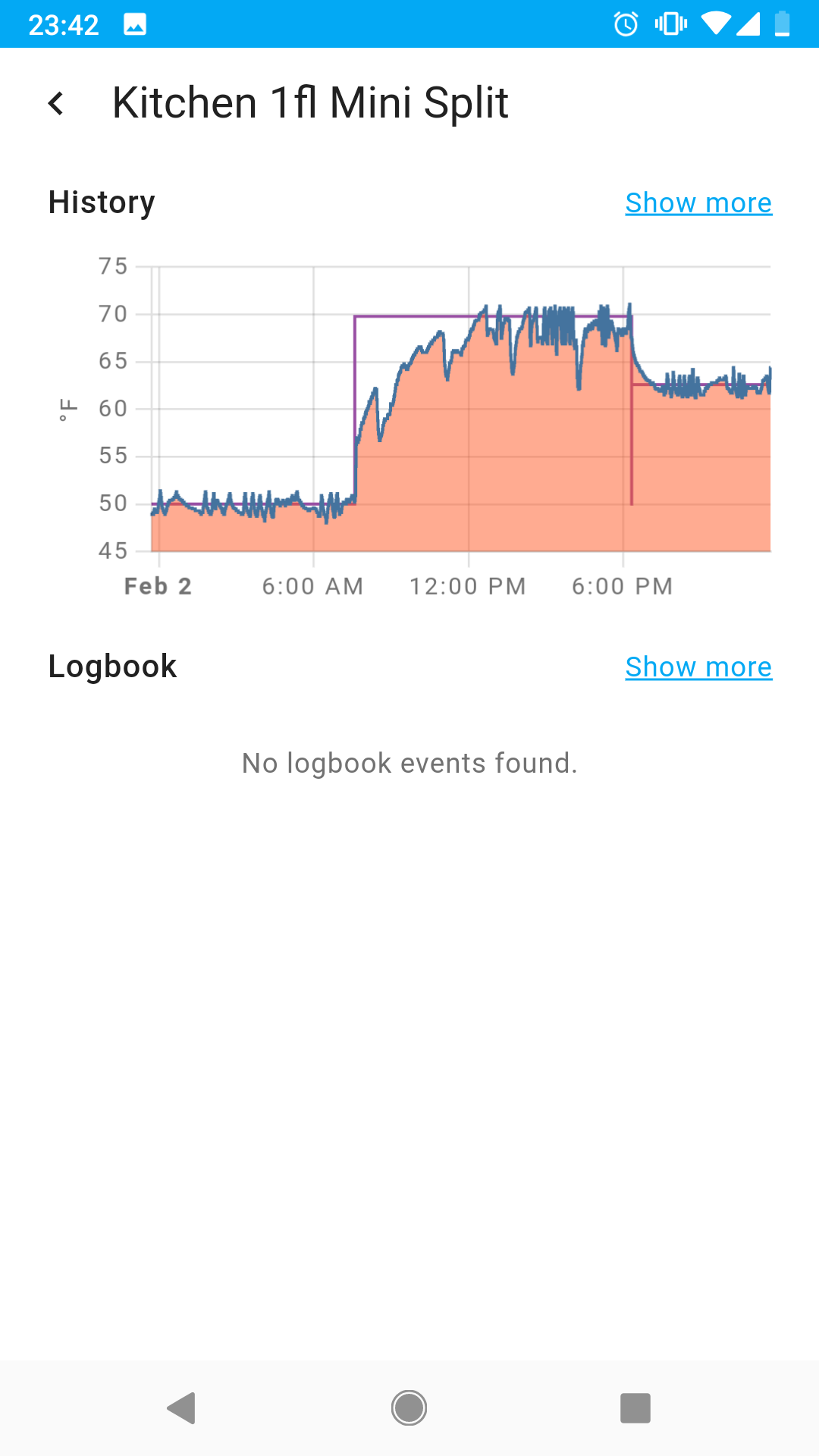What is your self-hosting setup for home thermostat?
-
I'm not sure the best way to ask or if there is a better community to post...
I'm hoping to use my home server to control my home thermostat but not sure where to start.
Does anyone use Home Assistant for this? Another software?
I'm not sure if I'm allowed to ask about hardware here, but are there things to be aware of in making sure that a wifi thermostat is best suited for the job?
-
 S [email protected] shared this topic
S [email protected] shared this topic
-
[email protected]replied to [email protected] last edited by
Zigbee or Zwave temperature/humidity sensors are common. Add a 3-circuit relay box and you can simulate the behavior of pretty much any thermostat with a few rules.
HA or any other system that can toggle outputs based on sensor thresholds would work just fine.
there are some subtleties with real HVAC thermostats, like running your AC compressor at least five minutes and ensuring that it stays off for at least 5 minutes when it’s turned off.
-
[email protected]replied to [email protected] last edited by
I got a Venstar T2000. Its at a decent price point, HAOS has built in support for it, and it can work entirely without internet.
-
[email protected]replied to [email protected] last edited by
I live in an apartment building with a stable enough temperature that I never have to use a heater or AC, but I do have a number of zigbee temperature/humidity sensors and a Home Assistant automation that turns on a window fan if the relative indoor vs outdoor conditions are favorable.
-
[email protected]replied to [email protected] last edited by
I have ESP8266 WiFi modules running Tasmota firmware for a few parts of this. Some report temperature (and humidity just for fun), I like DS18B20 sensors better than SHT30s which seem to have a bit more self heating. Then I also have Mitsubishi mini split heat pumps for which there's a Tasmota control library. MQTT for communication + HomeAssistant for UI + AppDaemon for automation scripts in Python.
Examples of the UI in HA:


-
[email protected]replied to [email protected] last edited by
Wow, very detailed! Thanks
-
[email protected]replied to [email protected] last edited by
Thanks for the tip! Others have mentioned that it's very tricky to find one that works offline without the manufacturer's software (website, login, data collection, etc)
-
[email protected]replied to [email protected] last edited by
I'd highly recommend not doing that. A smart thermostat is much easier and going to be a lot more reliable. And it won't stop working if your server goes down.
-
[email protected]replied to [email protected] last edited by
I've got a couple Honeywell T6 z-wave thermostats that work great and didn't cost a lot. I control them through home assistant with some custom code to set them on a schedule, but they can also still be operated manually if needed.
-
[email protected]replied to [email protected] last edited by
Each room has one ZigBee thermometer and thermovalves for the heaters. Home Assistant with an automation open and closes them based on the thermometers.
Also in HA, I have a schedule for the "comfort" temperature so that the boiler can be turned on and off accordingly.
See https://wiki.gardiol.org/doku.php?id=homeautomation%3Aheating for the detailed setup.
-
[email protected]replied to [email protected] last edited by
Plus 1 to Venstar. Got myself the T7900 and even though it offers internet access, I just blocked it at my router and connected it to the network, controlling it through home assistant. No need for third party access and whatnot with it since it's completely local.
-
[email protected]replied to [email protected] last edited by
Same, you can enable local only API. Works great and they have public docs for it's API. I also have an exporter with grafana graphs.
-
[email protected]replied to [email protected] last edited by
I have the T6 as my main but I cannot do per-room heating because my Sonoff TRV's cannot talk to it in HA. I got the T6 before working with HA though. In my country the T6 is WiFi and you need the Resideo app.
-
[email protected]replied to [email protected] last edited by
FritzBox Dect.
Minimal networking footprint utilizing Dect as the transmission protocol. -
[email protected]replied to [email protected] last edited by
I have a cheap homekit thermostat that I use with home assistant. Being able to turn it off for movies or during peak energy hours is nice. What was most helpful, however, was putting temperature and humidity sensors in every room, so that I could move around heat generating stuff to balance the temps throughout my apartment. I moved my server and gaming pc tower out of my home office. The temperature spread went from 8 deg F to 2 deg F.
-
[email protected]replied to [email protected] last edited by
You can set up a simple, dumb thermostat in parallel, to act as a failsafe. Set it 5 degrees below your lowest heat setpoint, and even if your server crashes, it doesn't let your house freeze.
-
[email protected]replied to [email protected] last edited by
Best place to start would be to look at the thermostat hardware you've currently got, and start searching online if anyone has integrated it into Home Assistant.
I've lived at a few houses now with Home Assistant. In all of them I was able to integrate my HVAC and automate it, but some brands and hardware are definitely easier than others.
I think the most extreme of them required a custom esphome device connected to its PCB to talk to Home Assistant, and another required me to write my own custom component.
Hardware and brands make a huge difference, but sometimes you're stuck with what you've got.
-
[email protected]replied to [email protected] last edited by@atzanteol @aubeynarf Clarification here There are ZigBee thermostats that are integrated sensors and switches where you can control the switch, read the sensor and control the set point both on the device and via ZigBee so they are controllable locally in two senses - on the device and with the home. There are proprietary Smart thermostats that may be local on the device but rely on external servers for any off device control. then there are Proprietary thermostats that are totally dependent on an internet connection to do anything - Its important to check
-
[email protected]replied to [email protected] last edited by
Feel free to ask over at [email protected] too.
But to echo some other comments here, whatever you do, keep it simple and ensure a botched HA update doesn't freeze / cook you by using standard components as a backup / failsafe
-
[email protected]replied to [email protected] last edited by
So which was the easiest?


